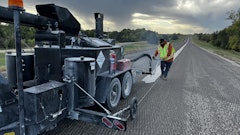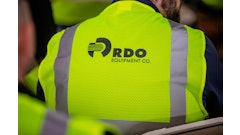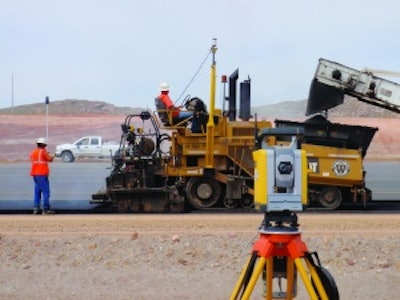
"Trimble paving customers using 3D have been achieving accuracies on sites of better than 6 mm," says Jeroen Snoeck, Trimble Paving Solutions Segment Manager. Some key factors that influence the accuracy include:
- Design accuracy. A paver with a 3D system will pave exactly what the design tells it to do. If the digital design is not dense enough, it can decrease accuracy in the areas for large cross slope changes such as elevated curves and transitions. To eliminate this potential issue, Trimble provides regular training for customers using Business Center software on paving projects.
- 3D paving control requires control points to be surveyed in on the site. Control points measured with GPS that have an accuracy of about an inch in the vertical will degrade the accuracy of the 3D paving system. To eliminate this potential issue, Trimble recommends that the paving contractor use the SPS930 Universal Total Station to establish the control points.
- Too frequent and too heavy manual intervention by the screed operator can also degrade system accuracy. The paver will lay asphalt exactly according to the digital design. To avoid any potential issues, Trimble encourages creation of good digital designs before the paver ever starts. Customers should be clear about what they want to achieve and add those requirements to the design. Using 3D normally means that the goal of the project is not running on thickness. You should not try to do both.



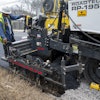
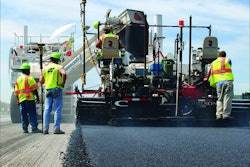
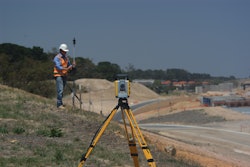
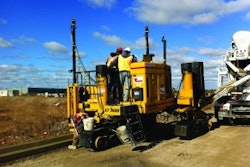
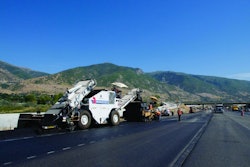

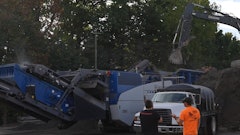

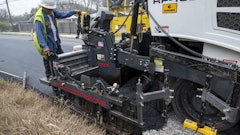


![Lee Boy Facility 2025 17 Use[16]](https://img.forconstructionpros.com/mindful/acbm/workspaces/default/uploads/2025/09/leeboy-facility-2025-17-use16.AbONDzEzbV.jpg?ar=16%3A9&auto=format%2Ccompress&fit=crop&h=135&q=70&w=240)


